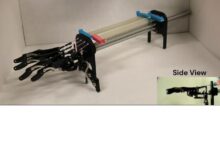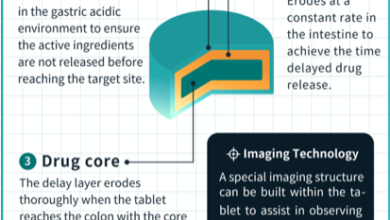
A heart-crushing ribosome traffic jam
[ad_1]
Fukuoka, Japan — A research team has found that mutations in a ribosomal protein found specifically in heart and skeletal muscle cause impaired cardiac contractility in mice.
Fukuoka, Japan — A research team has found that mutations in a ribosomal protein found specifically in heart and skeletal muscle cause impaired cardiac contractility in mice.
The mutations were found to delay the rate of translation of mRNA, which causes ribosomes to collide and lead to abnormalities in protein folding. The abnormal protein will then be targeted and degraded by the cell’s quality control system. Moreover, while deficiency of a ribosomal protein, known as RPL3L, alters translation dynamics for the entire tissue, the effect is most pronounced for cardiac muscle contraction-associated proteins.
Studies published in Nature Communications, shedding new insights into dynamics of molecules as fundamental as the ribosome. In addition, because deficiencies in the RPL3L gene have been found in humans with cardiomyopathy and atrial fibrillation, the team hopes their new findings may lead to future treatments.
You are probably familiar with the process by which cells produce the proteins and molecules that make the body function. DNA is transcribed into messenger RNA, or mRNA, which is then used as a blueprint for linking amino acids together and building proteins. The core of the process of protein formation is the ribosome which reads the mRNA and translates the code into protein.
Because of their fundamental function, ribosomes are found in all cells and are generally considered to be the same. However, recent studies have revealed differences in the structure of the ribosome.
“This difference in ribosome structure has been shown to lead to translation specificity. For example, some ribosomes are better at producing proteins that control metabolism, or the cell cycle. This is a new concept called Ribosome Heterogenity,” explained Keiichi I. Nakayama of Kyushu University’s Medical Institute of Bioregulation, who led the research. “We hypothesize that this heterogeneity exists between networks. After screening for tissue-specific ribosomal proteins, we found one that is only expressed in heart and skeletal muscle: RPL3L.”
To elucidate the function of RPL3L, the team studied the hearts of mice with mutations in the RPL3L gene. As expected, echocardiographic analysis showed that they had reduced cardiac contractility. Their next step is to learn why this mutation causes the condition it does. As it turns out, the RPL3L mutation causes a ‘translational jam’ for a protein important in proper heart function.
“We found that the RPL3L mutant would delay the translation of the proline and alanine codons in the mRNA. This delay causes the ribosomes to collide, resulting in the protein not folding properly,” continued Nakayama. “The misfolded protein is then cleared from the cell by its quality control system. More importantly, most of the misfolded protein is involved in heart contraction.”
The team hopes that by deepening our understanding of the translational dynamics of ribosomes such as RPL3L, they can better understand how its genetic mutation—which is found in patients with dilated cardiomyopathy and atrial fibrillation—can lead to heart disease.
“We are developing new understandings in biology and medicine every day, even in something as basic as the ribosome. I’m excited to see what we’ll find next,” concluded Nakayama.
###
For more information on this research, see “RPL3L-containing ribosomes determine the dynamics of translational elongation necessary for cardiac function,” Chisa Shiraishi, Akinobu Matsumoto, Kazuya Ichihara, Taishi Yamamoto, Takeshi Yokoyama, Taisuke Mizoo, Atsushi Hatano, Masaki Matsumoto, Yoshikazu Tanaka, Eriko Matsuura-Suzuki, Shintaro Iwasaki, Shouji Matsushima, Hiroyuki Tsutsui, Keiichi I. Nakayama Nature Communicationshttps://doi.org/10.1038/s41467-023-37838-6
About Kyushu University
Kyushu University is one of Japan’s leading research-oriented institutes of higher education since its founding in 1911. Home to approximately 19,000 students and 8,000 faculty and staff, Kyushu U’s world-class research center covers a wide range of subject areas and research fields, ranging from the humanities and arts to engineering and medical science. Its campuses—including one of Japan’s largest—are located around Fukuoka City, a coastal metropolis on the southwestern Japanese island of Kyushu, often ranked as the world’s most liveable city and historically known as Japan’s gateway to Asia. Through Vision 2030, Kyushu U will ‘Driving Social Change with Integrative Knowledge.’ Its synergistic application of knowledge will encompass all academics and solve problems in society while innovating new systems for a better future.
Journal
Nature Communications
DOI
10.1038/s41467-023-37838-6
Research methods
Experimental study
Research Subjects
Animal
Article title
Ribosomes containing RPL3L determine the dynamics of translational elongation necessary for cardiac function
Article Publication Date
20-Apr-2023
[ad_2]
Source link






